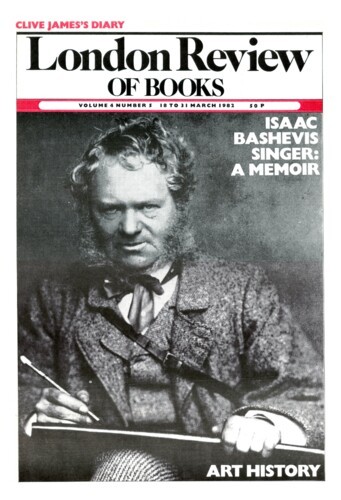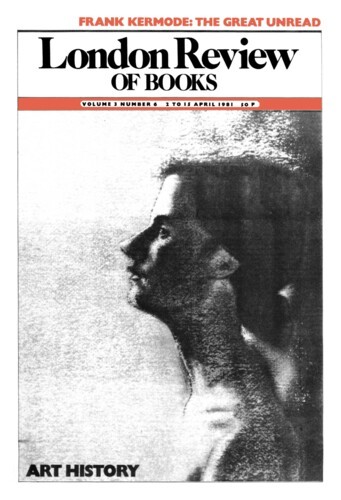Modernism’s Future
Jon Whiteley, 18 March 1982
Has the art of our century an identity of its own? Is it consistent? Has it common interests? The Oxford Companion to Art, published in 1970, is not helpful in answering these questions. It has no entry for ‘Modern Art’ while the title of the new companion, the Oxford Companion to 20th-Century Art, also edited by Harold Osborne, cautiously avoids the issue. Yet 90 per cent of the artists mentioned inside the recent book (although not, of course, 90 per cent of 20th-century artists) are the spiritual progeny of two or three French artists working at the turn of the century. Not a movement, perhaps, but certainly a family. The founding fathers of the High Renaissance never had success like this. In a century from now, when the nature of ‘Modernism’ will be clearer, the pundits may, after all, decide that ‘Modern Art’ (as distinct from Cubism, Surrealism, Minimalism and the many lesser eddies all conscientiously described by Harold Osborne) is no more useful as a term than Romanticism or Classicism have been in helping us to understand the art of the past.


